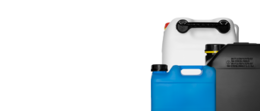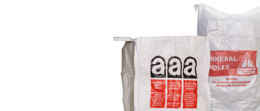Material Information
Glass
serves as an environmentally friendly packaging material with classic appeal. It boasts a 100% recyclability rate, allowing it to be recycled repeatedly without any degradation in quality or purity. Widely utilized for packaging various food items such as beverages, jams, and sauces, glass is available in numerous shapes and colors to suit different needs. In the realm of chemical and technical products, including pharmaceuticals, laboratory supplies, and cosmetics, glass provides robust protection. It effectively shields contents from contamination, pests, bacteria, moisture, oxygen, light (to a certain degree), external odors, heat, chemical interactions, and diffusion.
Production:
The production of glass is a resource-saving process that has less impact on the environment than other packaging materials such as plastic or aluminum. The most important steps in the manufacturing process are
1) Raw material extraction: glass is made from natural raw materials such as sand, soda and lime, which are found in large quantities on earth and are easily degradable.
2) Melting: The raw materials are heated in a melting furnace until they become liquid and combine to form glass.
3) Shaping: The liquid glass is poured into molds to obtain the desired packaging shape.
4) Cooling and finishing: After cooling, the glass is checked for any defects or irregularities and reworked to ensure a high-quality end product.
Applications:
- Paints and varnishes: Glass packaging protects paints and varnishes from environmental influences and prevents the penetration of moisture and harmful substances. The chemical resistance of glass also prevents a reaction with the ingredients and maintains the quality of the paints and varnishes.
- Chemical products: Glass is ideal for packaging chemical products as it is chemically inert and does not interact with the packaged substances. This preserves the chemical properties of the products and reduces the risk of contamination.
- Food and beverages: Glass packaging is particularly suitable for food as it does not release harmful chemicals and does not affect the taste of the packaged product. They also provide an excellent barrier against oxygen and light, which extends the shelf life of the food.
- Pharmaceutical products: In the pharmaceutical industry, glass is a preferred packaging material as it ensures the effectiveness and safety of medicines. It protects the products from environmental influences and contamination and enables precise dosing.
- Disposal/recycling: Glass plays an important role in disposal and recycling. It is 100% recyclable and can be reused an infinite number of times without any loss of quality, which makes an important contribution to waste avoidance and environmental protection.
- Mineral oils + lubricants: Glass packaging provides an excellent barrier against oxygen, light and moisture and is therefore ideal for the storage and transportation of mineral oils and lubricants. In addition, the chemical resistance of glass prevents a reaction with the contents and preserves their quality.
The benefits of using glass as a packaging material over alternatives like plastic, steel, or tinplate include:
- Sustainability: Glass stands out for its superior recyclability. It can be reused multiple times without quality loss, unlike plastic, which has limited recyclability, and steel or tinplate, which may pose recycling challenges.
- Environmental Impact: While glass is non-biodegradable, it eventually breaks down into a harmless state, unlike plastics that degrade slowly and can release toxic substances. Steel and tinplate packaging, if not properly disposed, may also adversely affect the environment.
- Food Safety: Glass is chemically inert, meaning it won't leach chemicals that could compromise food or beverage quality. Conversely, plastic, steel, and tinplate packages might release chemical traces during their production or storage that could affect product quality.
- Taste and Odor Preservation: Unlike its counterparts (plastic, steel, or tinplate), glass does not alter the taste or smell of its contents, ensuring the original flavor and aroma are preserved.
- Durability and Temperature Resistance: Glass is more resistant to scratches and other forms of damage compared to plastic, steel, or tinplate. It also withstands a broader range of temperatures, making it more versatile for various uses.
- Visibility of Contents: The transparency of glass packaging allows consumers to view the product inside, which is particularly advantageous for food and beverage items. This feature is not available with opaque materials like plastic, steel, or tinplate, hindering content visibility.
In summary, glass has emerged as a highly versatile and environmentally friendly packaging option across a wide range of industries. Its chemical stability, robustness and high recyclability position it as a sustainable replacement for traditional packaging materials such as plastic or aluminum. By choosing glass packaging, companies can demonstrate their commitment to environmental stewardship, maintain product integrity and respond to the growing consumer preference for environmentally conscious packaging solutions. In essence, glass as a packaging medium offers numerous benefits that position it as a progressive choice for fostering a more sustainable economic environment.








